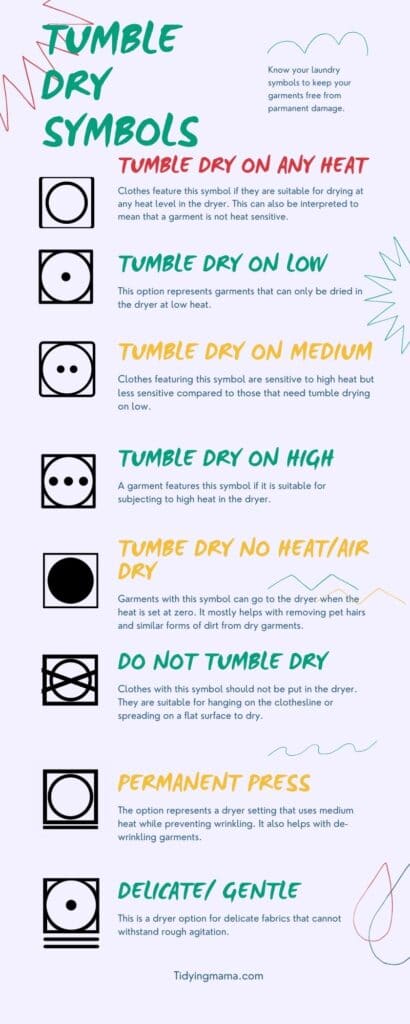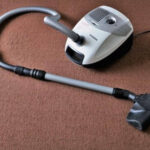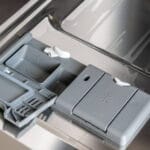Ordinarily, I prefer to hang my laundry on the clothesline. Besides saving on electricity cost, I like the fact that clothes end up smelling super-clean and fresh. In addition, a hot sunny day makes white garments appear brighter.
However, my only option on a dead-cold or rainy day is a dryer. It gets the job done and in much shorter time compared to a clothesline or just spreading laundry on a flat surface.
On the downside, not all garments can be tossed into the dryer. I first check each garment’s care tag to see if it should go in there or not.
Ideally, if a garment is suitable for drying in the dryer, it features a symbol that indicates tumble dry. Therefore, you have to understand the different symbols on your clothes to be able to figure out the tumble dry option in the first place.
What is Tumble Dry?
Tumble drying simply means drying laundry in a dryer. The word tumbling implies the spinning movement that clothes make inside a dryer as hot air circulates to absorb moisture.
As aforementioned, a care tag symbolically tells whether a garment is suitable for tumble drying. The symbols vary based on fabric features.
Essentially, the level of heat that different fabrics can be subjected to without damage is not the same. Some fabrics can remain intact in high heat whereas others shrink or develop other forms of damage.
Tumble Drying Symbols

- Tumble dry on any heat: Clothes feature this symbol if they are suitable for drying at any heat level in the dryer. This can also be interpreted to mean that a garment is not heat sensitive.
- Tumble dry on low: This option represents garments that can only be dried in the dryer at low heat. Accordingly, subjecting them to high heat can lead to shrinkage and increased wear and tear.
- Tumble dry on medium: Clothes featuring this symbol are sensitive to high heat. However, they are much better compared to those that feature the tumble dry on low symbol.
- Tumble dry on high: A garment features this symbol if it is suitable for subjecting to high heat in the dryer.
- Tumble dry no heat/air dry: Garments with this symbol can go to the dryer when the heat is set at zero. It mostly helps with removing pet hairs and similar forms of dirt from dry garments.
- Do not tumble dry: Clothes with this symbol should not be put in the dryer. They are suitable for hanging on the clothesline or spreading on a flat surface to dry.
- Permanent press: The option represents a dryer setting that uses medium heat while preventing wrinkling. It also helps with de-wrinkling garments.
- Delicate/Gentle: This is a dryer option for delicate fabrics that cannot withstand rough agitation.
Dryer Settings/ How to Tumble dry Correctly
- Regular/heavy: Some dryers refer to the setting as automatic or cotton. Ideally, it is the best option for laundry that takes a relatively long period to dry. Examples include jeans and towels.
- White fabrics that can take high heat are also an excellent choice for this setting because they cannot fade.
- Wrinkle release: The setting helps with eliminating wrinkles from clothes.
- Delicate/ gentle: While most delicate garments should go to the clothesline, there are those that can benefit from the delicate cycle of dryer.
- Permanent press: Choose this option for colored clothes made of fabrics that are suitable for medium heat. Since the heat is quite gentle, the garments do not fade.
- Permanent press is also a great option for laundry that gets wrinkled easily. Besides preventing wrinkling, it helps minimize the appearance of wrinkles.
- Air fluff: This dryer setting does not apply heat to your garments. Accordingly, it is the most appropriate if you intend to remove pet hair and lint from dry clothes. You can also use it to make clothes (especially dry clean ones) smell fresh and appear less wrinkled. The secret is to add a dryer sheet.
Important Tips for Tumble Drying Clothes
Important Tips for Tumble Drying Clothes
Load properly wringed clothes into the dryer: Do not just throw your clothes into the drum. Ensure that your washer rinses the clothes well in the spin cycle. Clothes with little water takes less time in the dryer thereby minimizing heat damage.
Load the drum properly: Do not load your drum with a lot of clothes. This helps prevent prolonged drying periods.
Separate clothes with color: In most cases, clothes that feature different colors do not require the same care. For example, white clothes can be subjected to high heat without fading. On other hand, it is best to use the permanent press setting for colors because it is quite gentle.
Tumble dry clothes for a short time: Avoid using a dry for more than a few minutes if you live in a place where you can air dry clothes conveniently. Air-drying protects your clothes from quick wear and tear.
Turn clothes inside out: Always ensure that you button clothes, fasten zippers and turn everything inside out. This protects the buttons, zippers and colors of the clothes.
Group clothes appropriately: Load clothes that can dry within the same period in the dryer. The idea is to avoid keeping clothes in the dryer longer than they should.





